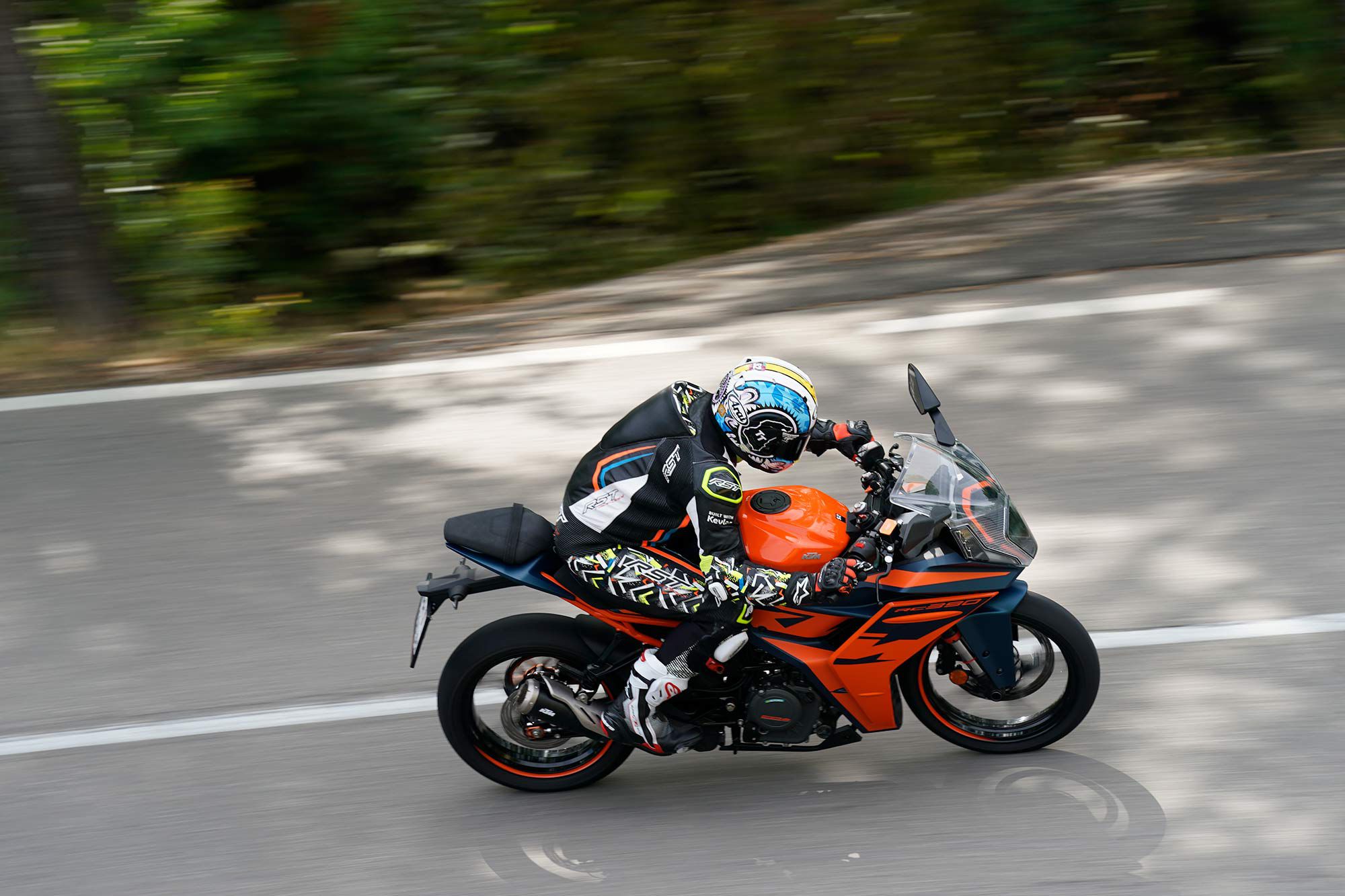
KTM’s RC 390 is aimed directly at the entry-level sportbike market, up against bikes like Kawasaki’s Ninja 400. The all-new RC 390 for 2022 features modern electronics that support lean-sensitive rider aids—a first for this class. Adjustable WP Apex suspension and grippy Continental tires make it a tempting buy for young riders who want to emulate their MotoGP heroes.
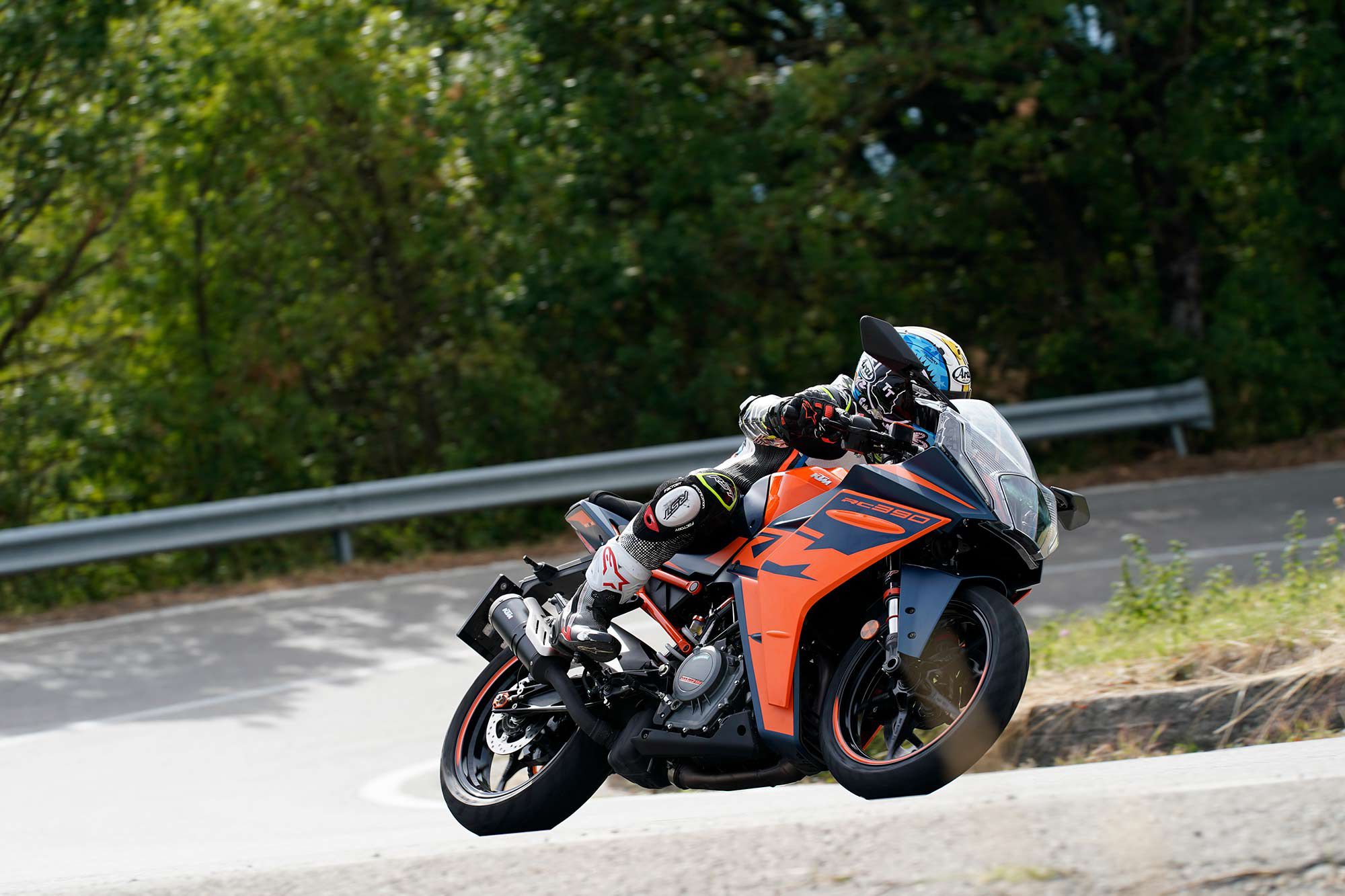
To ensure the RC 390 was A2 license compliant for Europe (power output maxing at 35kW/47 bhp) there wasn’t a need to create more peak power. Instead, the Austrians have improved torque slightly and focused on handling, technology, and aerodynamics.
The majority of KTM’s efforts have gone into the handling. The trellis frame is completely new. There is more lateral flex than the previous model and the subframe is a separate unit that saves 3.3 pounds. Suspension is provided by WP with a 43mm fork featuring compression and rebound damping adjustment while the rear shock gets preload and rebound adjustment. Further weight savings come from lightweight wheels that are 7.5 pounds or 30 percent lighter than before—a huge reduction in unsprung weight.
Related: Motorcycle Reviews And Comparisons
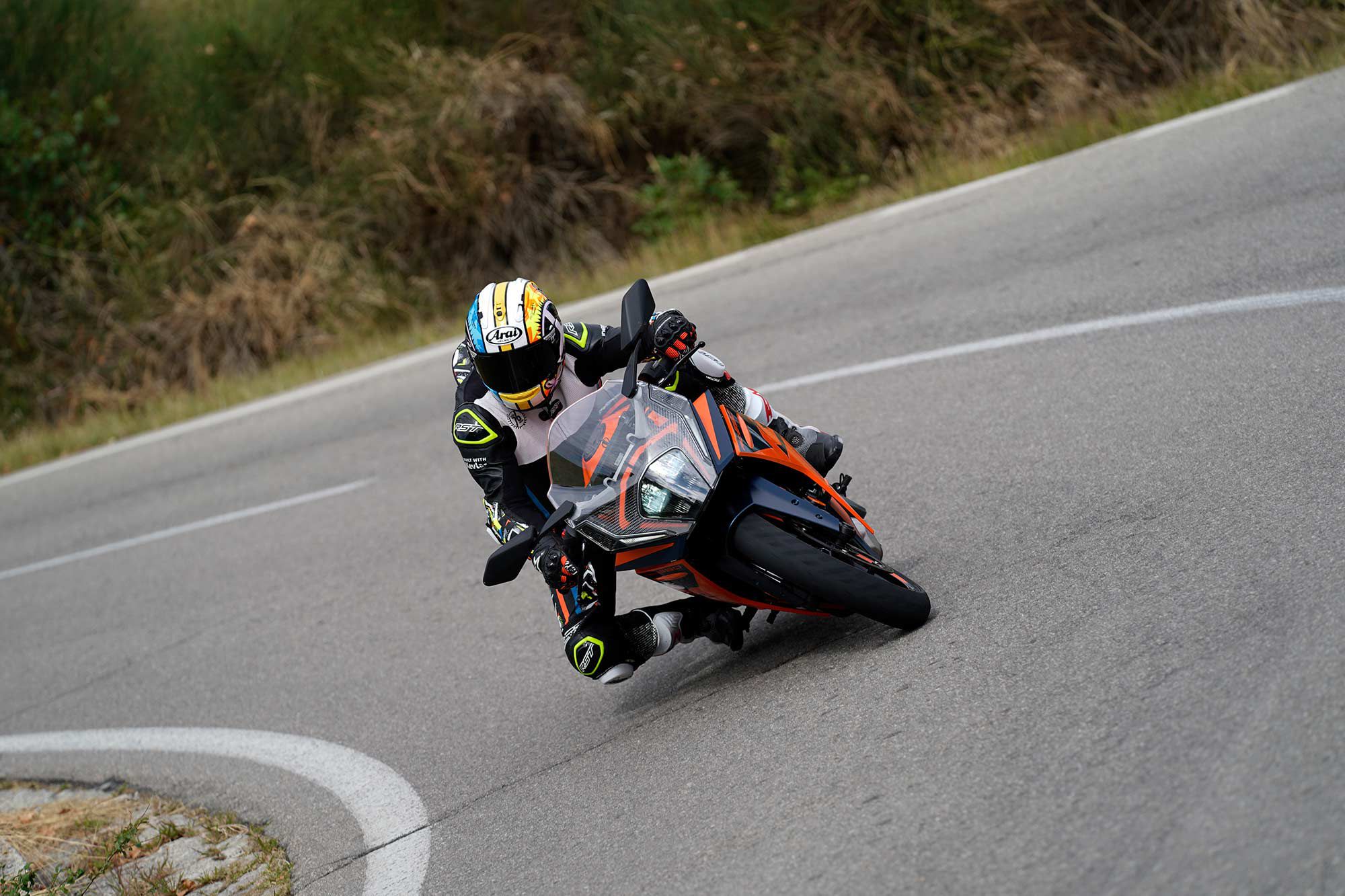
There are new brakes and new Continental rubber; the battery and electronics have moved to between the rider and fuel tank; there’s a larger, comfier seat for rider and pillion; a new full-color TFT dash; changeable ABS… The list just keeps going.
KTM hasn’t dramatically changed the single-cylinder streetbike engine, which remains at 373cc. The 2022 model makes 44 bhp at 9,000 rpm, the same as the previous model. A completely new exhaust, revised fueling, and a 40 percent larger airbox have boosted torque slightly, up 1.5 pound-feet to 27.3 pound-feet at 7,000 rpm.
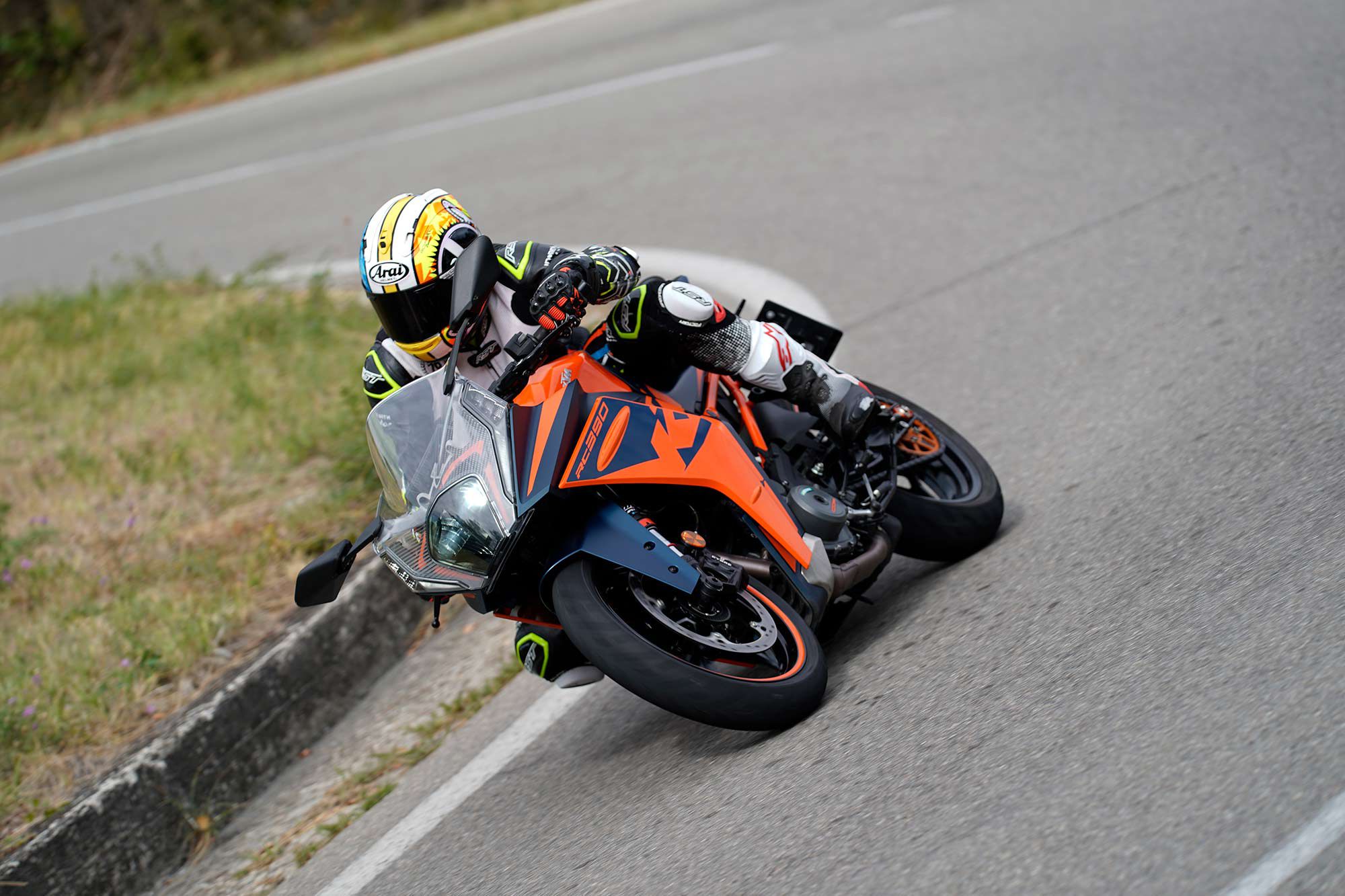
Despite the engine remaining relatively untouched, top speed has increased due to the improved aerodynamic efficiency of new bodywork, which was inspired by the RC16 race-winning MotoGP bike.
A quick press of the starter button and, to be honest, I’m a little disappointed. It sounds strangled in stock trim. Once higher up in the rev range, the backing vocals do improve, and this is where you’ll want to spend most of the time.
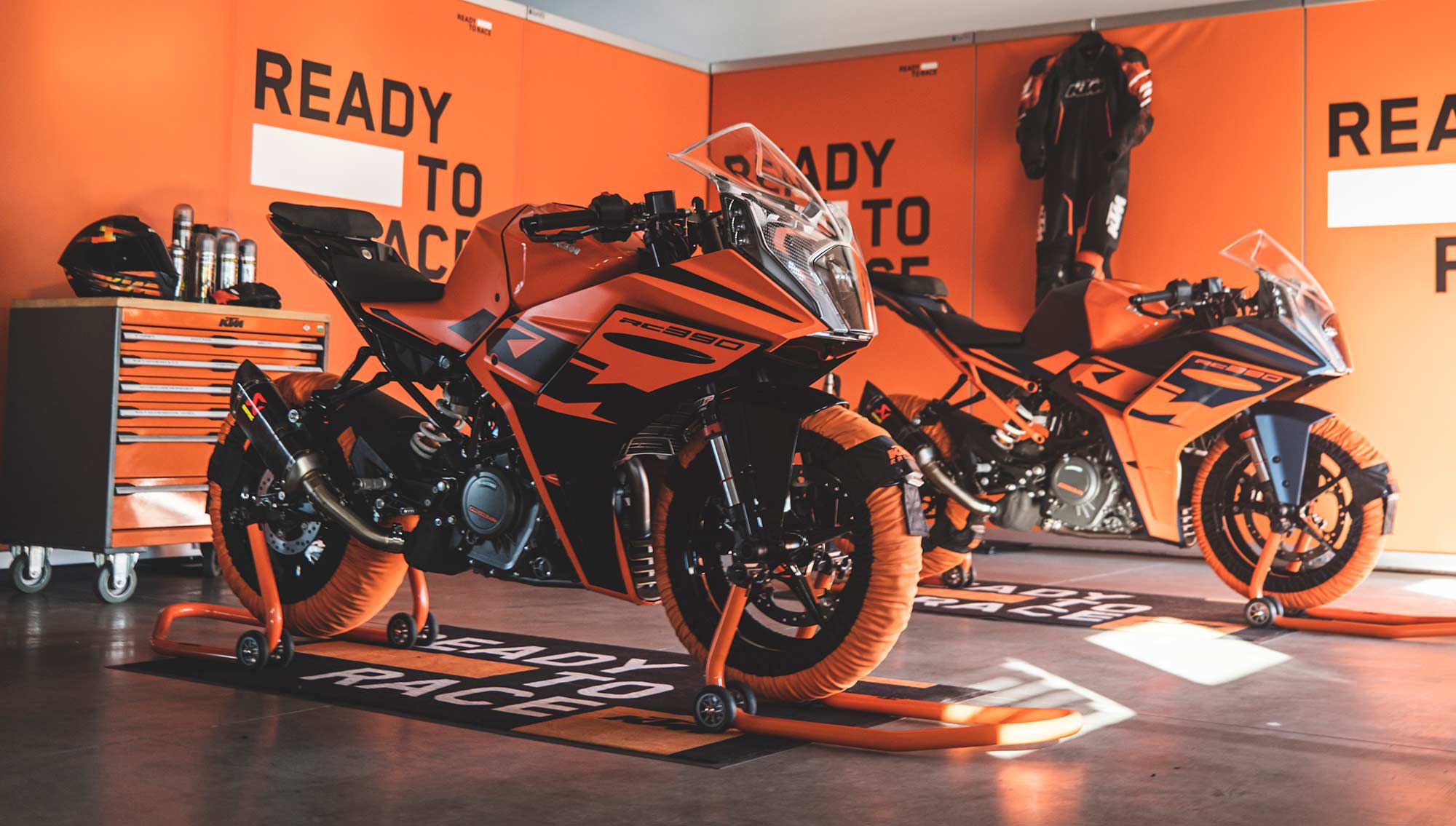
Below 6,000 rpm the RC will pull easily and cleanly, with only a slight chug below 2,000 rpm. This is a usable and refined single-cylinder engine. But if you want to have fun, you need to be north of 6,000 revs, especially on the track.
The RC will happily pull to the redline in each gear—even top. I managed to squeeze out an indicated 111 mph; tucked in with a favorable tailwind there might be a little more before you hit the rev limiter.
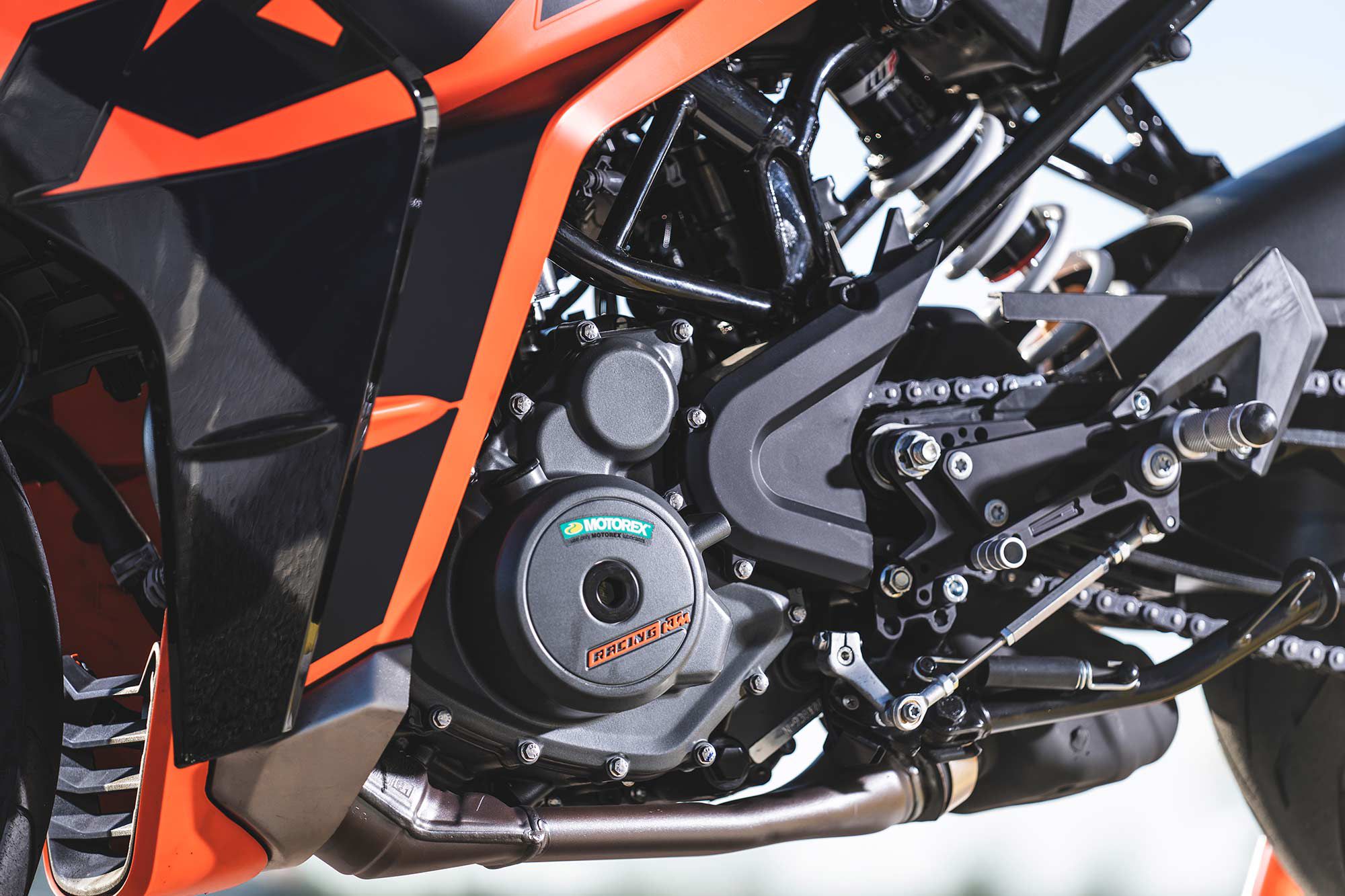
The Austrian motor loves being thrashed—just nudge the optional quickshifter when the full-color digital rev counter starts to flash… In fact, the RC is pure and uncomplicated fun to ride fast, especially as you’re not doubling the national speed limit every time you open its ride-by-wire throttle.
As you’d expect, WP controls the suspension at each end. Wheels are new and very light, saving 7.5 pounds—a massive reduction in unsprung weight. The trellis frame is new, too, and similar to that of the 390 Duke but with more flex to give the rider more feel, and it now attaches to a removable subframe. Quoted weight is 342 pounds “ready to race” but with no fuel, and you are immediately aware of the bike’s lightness and agility. A new rider will thrive in its ease of use and natural control.
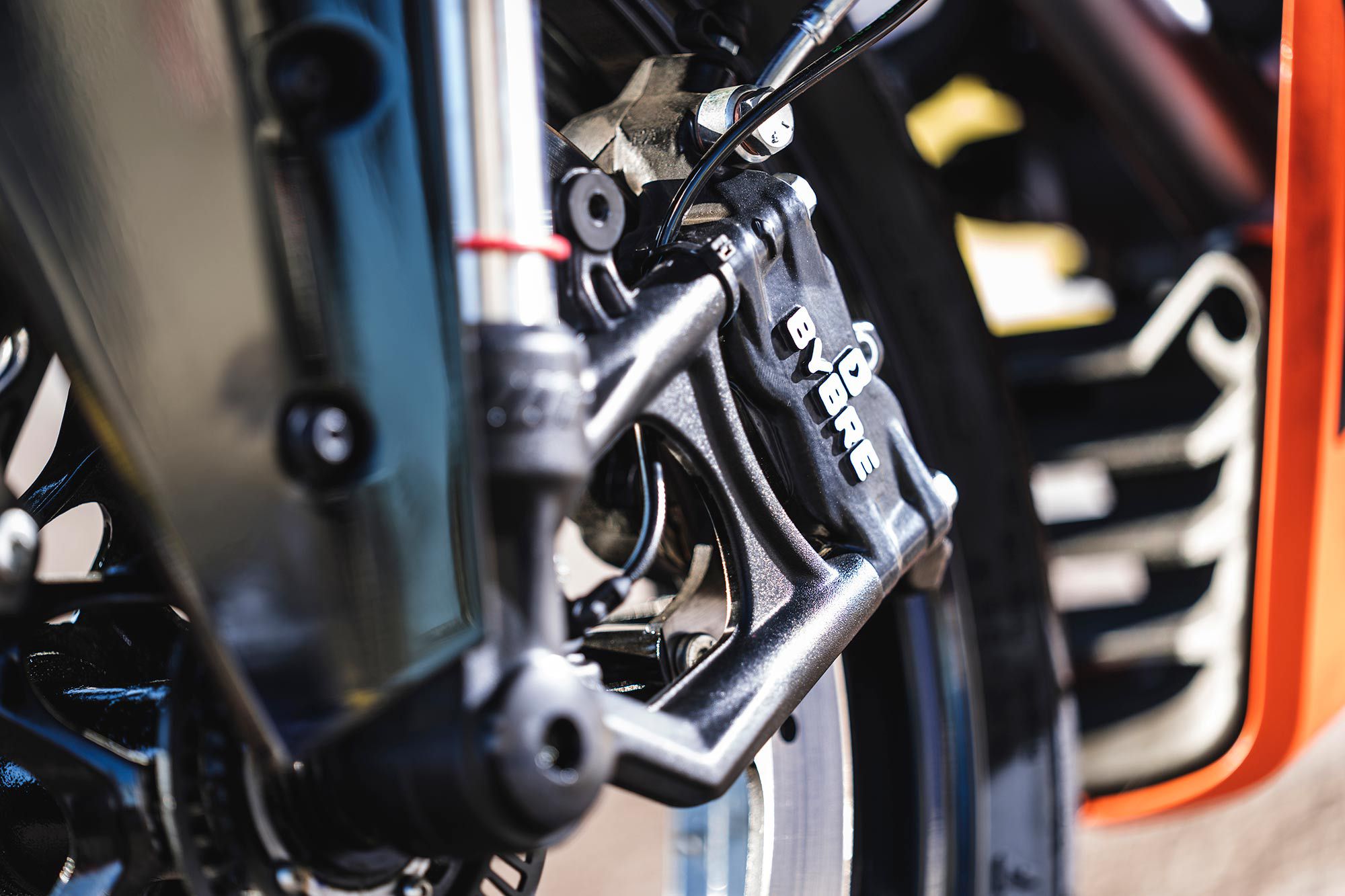
In the test route’s mountain passes the RC 390 continued to shine. The suspension feels high quality and plush, though possibly a little soft on the rear. It’s forgiving, creating a smooth intimidating ride quite unlike the hard racebike image the KTM marketing proclaims, but the feedback is excellent while the Continental rubber gives excellent grip to knee-down levels of lean.
I found the rear a little too soft (it was possibly set up for someone lighter), so I made a slight adjustment to the preload and rebound. The small adjustments were immediately apparent, which highlights the quality of the suspension.
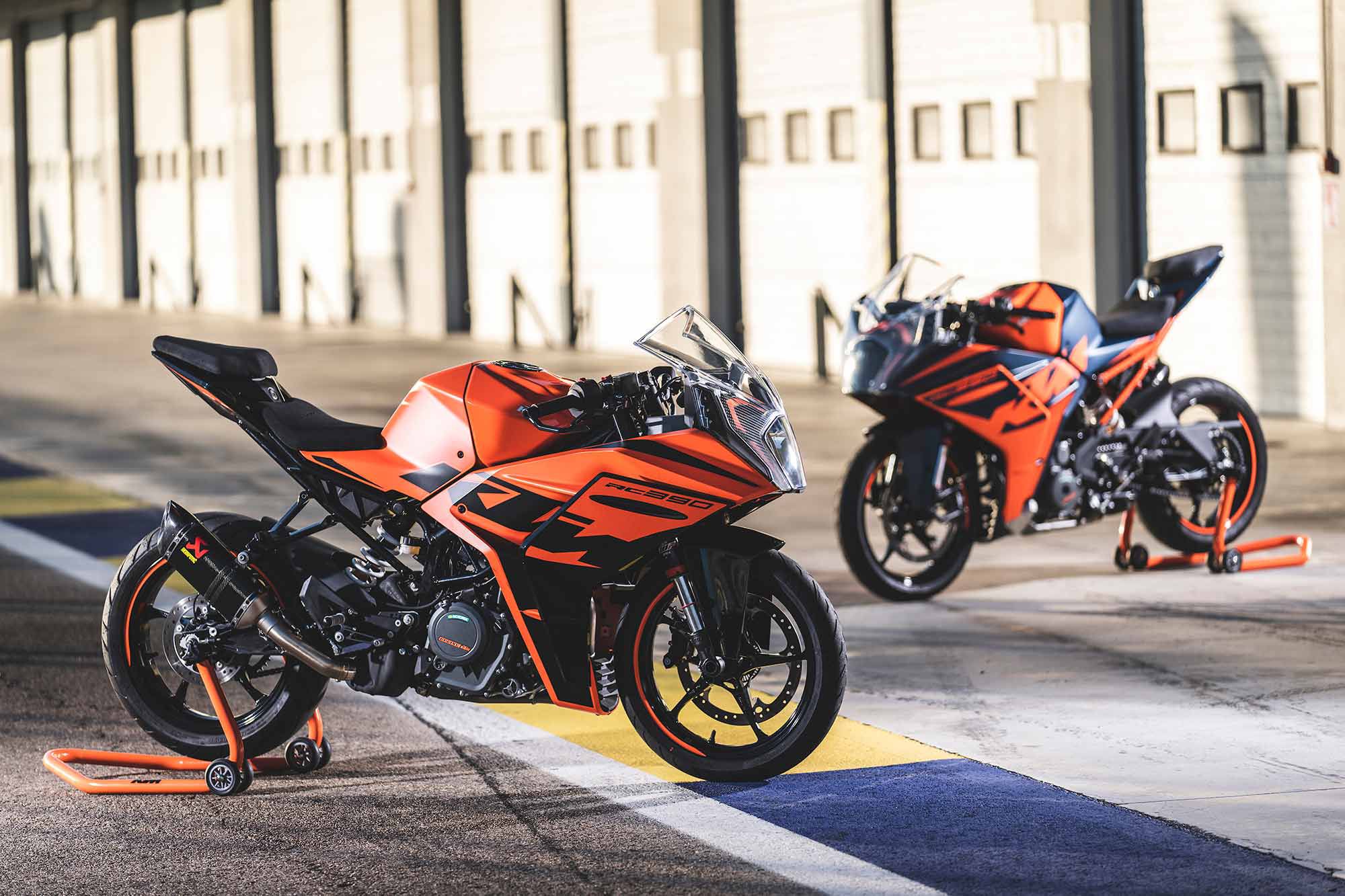
On the track I was pushing for fast lap times, yet the suspension remained controlled, ground clearance was fine, and the brakes didn’t fade. After six fast track sessions I had to remind myself that this is an entry-level bike, built to a budget, and designed to be a doddle to ride at low speeds—because on track it is more than delivered.
Stopping power has been increased courtesy of a radial-mounted ByBre four-piston caliper grabbing a 320mm single brake disc, with a 230mm disc on the rear, and the new setup is also lighter by 2 pounds. There is also the option to switch into Supermoto mode, which allows the rear to lock but still maintains ABS on the front. This allows you to brake devilishly late, even with the rear off the ground there is no ABS interventional until the front locks.
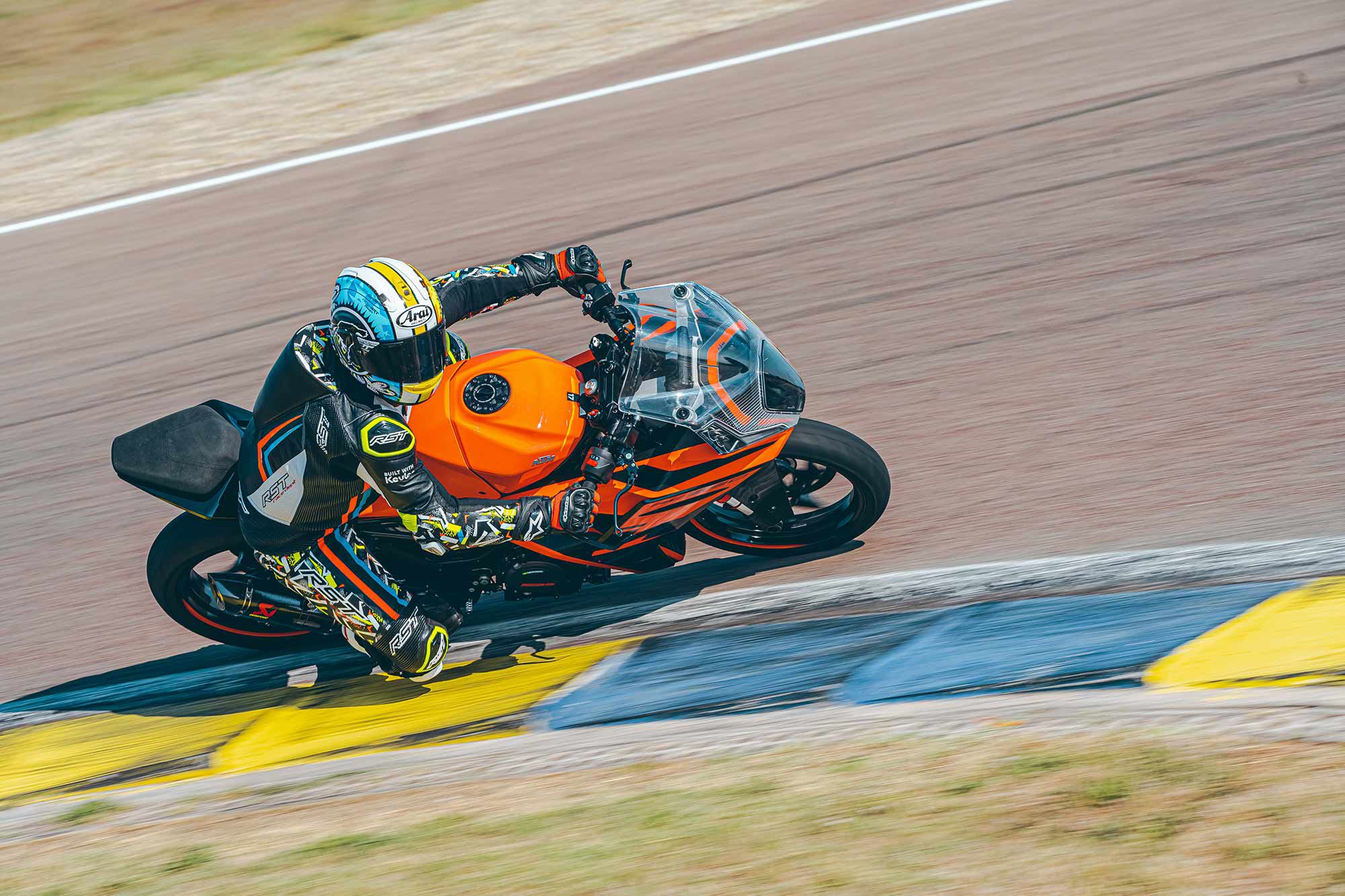
KTM has listened to customer feedback and knew it had to improve the tank range of the RC 390. Now fuel capacity has gone up from 2.6 gallons to 3.6 gallons. The seat for both rider and pillion is larger, the bodywork is a decent size; it’s not toylike, like some bikes in this category. Both levers and even the bars can be adjusted to suit all riders.
The all-new full-color dash, with Bluetooth connectivity, is relatively simple to navigate, with no confusing, multiple riding modes. It’s easy to scroll through the trips and relevant information as well as clear and easy to read. You can even turn off the TC on the move. I’d take on some serious miles on the KTM, but I’m unconvinced about the pillion perch…
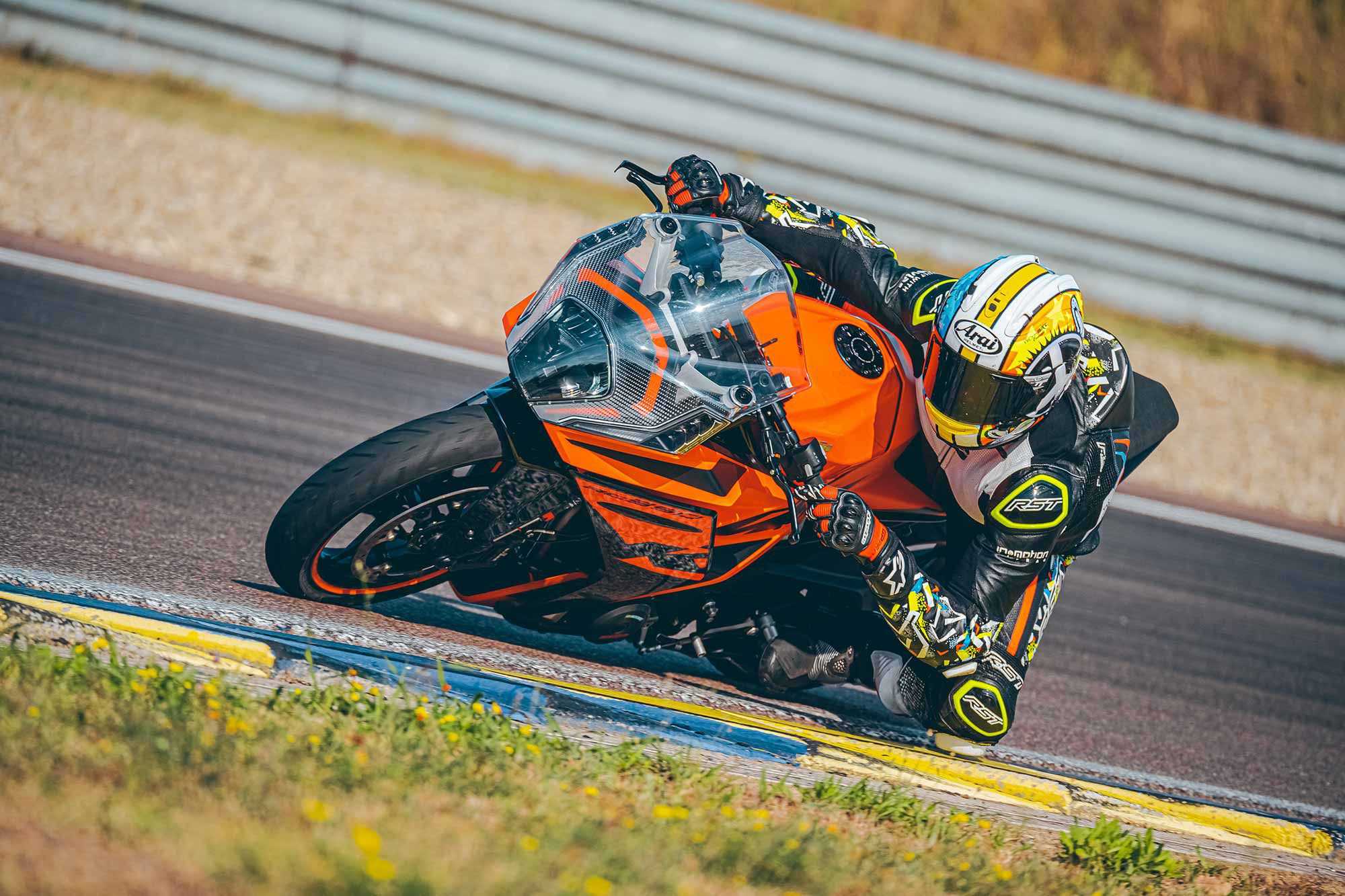
As mentioned, the RC 390 comes equipped with lean-sensitive ABS and traction control (MTC). KTM uses a 3D sensor to work out what the bike is doing. This is not as sophisticated as a six-axis IMU, which you would find on an exclusive superbike or adventure bike, but it works in a similar way using fewer sensors.
The lean-sensitive ABS is excellent, the rider only feeling the rear ABS kick in on the road on uneven ground. And I never felt the traction control working, not even on track in perfect conditions. Obviously, we rode in perfect conditions, but at night, in congestion and coping with spilled diesel and blind cab drivers, I’d certainly want that reassurance of TC.
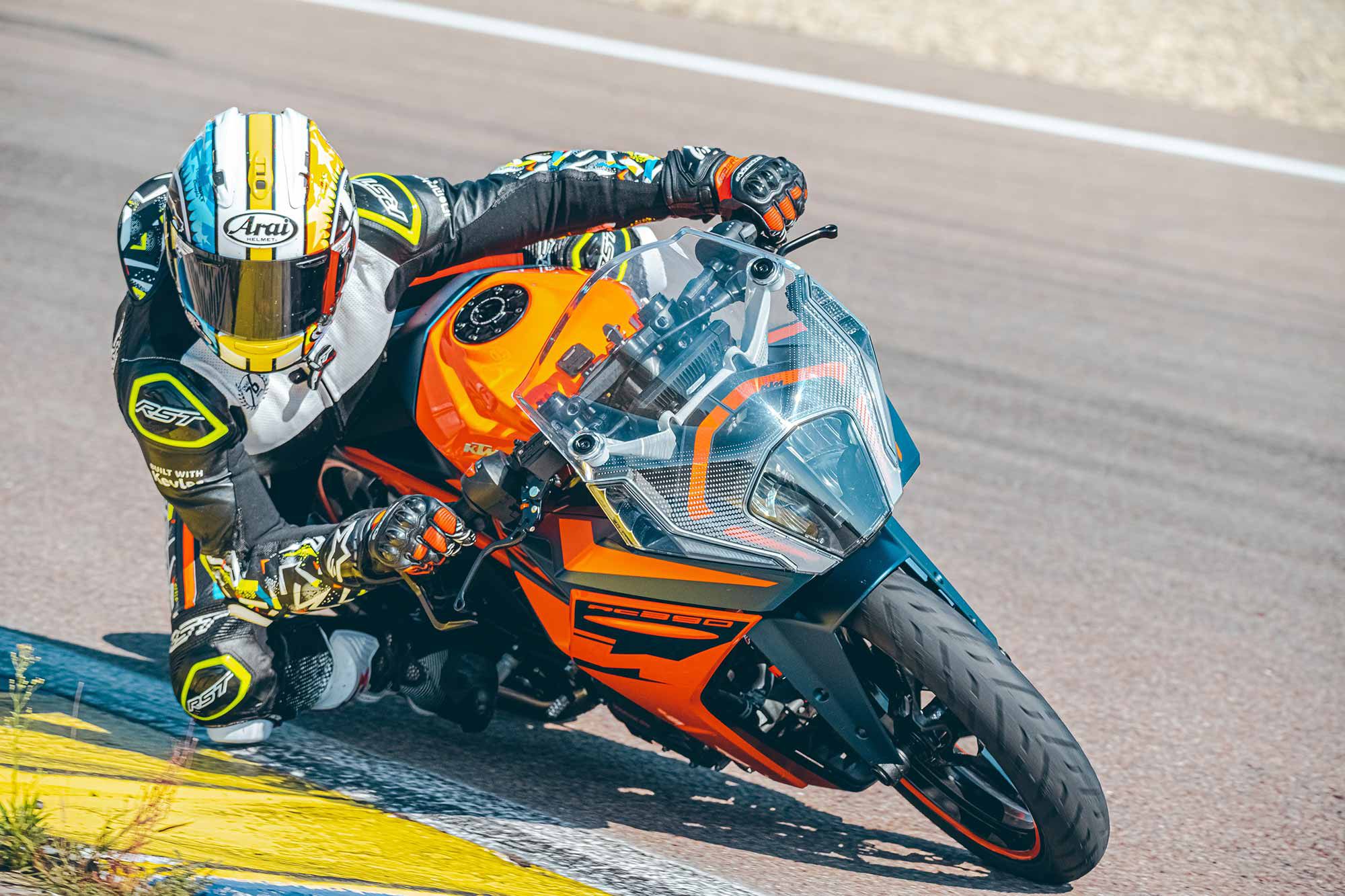
Verdict
The all-new RC 390 really does set a new standard for this class in its handling, chassis spec, and electronic rider aids. It’s a big step up from the previous model. Light and nimble downtown, it can cut it on track and has impressive comfort and range for this class. MotoGP-inspired looks, TFT clocks, WP suspension, and LED lights add to its charm.
If you want a sporty entry-level bike, then you can’t go wrong with the KTM. Price hasn’t been confirmed yet and it could be relatively dear, and the quickshifter isn’t standard. But considering it has less than 50 bhp to play with, it’s great fun on road and on track. The new KTM RC 390 has set a level for this important class.
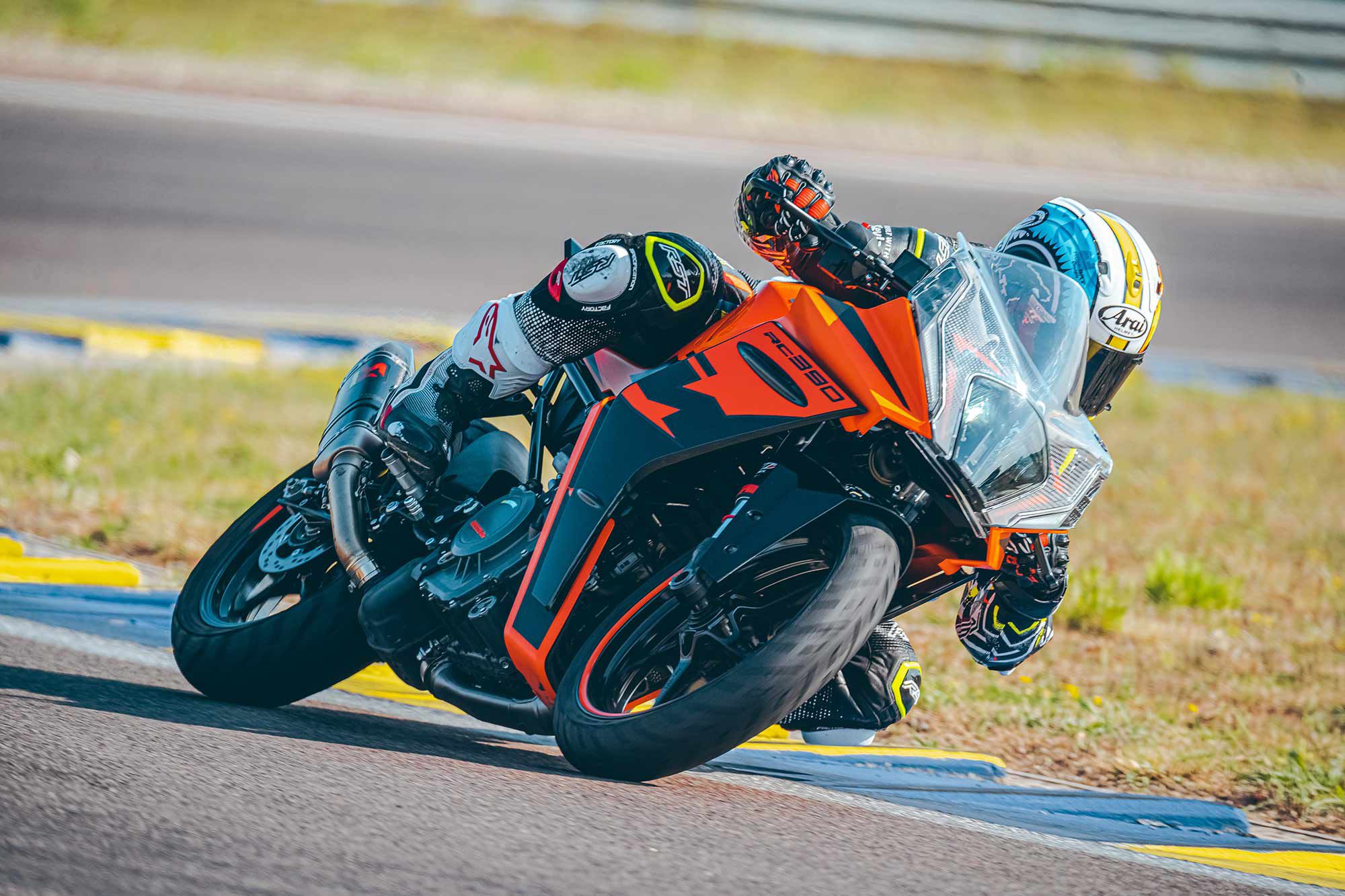
2022 KTM RC 390 Technical Specifications and Price
| PRICE | $TBA |
| ENGINE | 373cc, DOHC, liquid-cooled single; 4-valves/cyl. |
| BORE x STROKE | 89.0 x 60.0mm |
| COMPRESSION RATIO | 12.8:1 |
| FUEL DELIVERY | Fuel injection, ride-by-wire |
| CLUTCH | PASC slipper; mechanically operated |
| TRANSMISSION/FINAL DRIVE | 6-speed/chain |
| CLAIMED HORSEPOWER | 44 hp @ 9,000 rpm |
| CLAIMED TORQUE | 27.3 lb.-ft. @ 7,000 rpm |
| FRAME | Steel trellis |
| FRONT SUSPENSION | WP Apex 43mm inverted fork, compression and rebound adjustable; 4.7 in. travel |
| REAR SUSPENSION | WP Apex, preload and rebound adjustable; 5.9 in. travel |
| FRONT BRAKE | ByBre radial 4-piston caliper, 320mm disc w/ Cornering ABS |
| REAR BRAKE | 1-piston caliper, 230mm disc w/ Cornering ABS |
| WHEELS, FRONT/REAR | Carbon; 17 x 3.0 in. / 17 x 4.0 in. |
| TIRES, FRONT/REAR | Continental road; 110/70-17, 150/60-17 |
| RAKE/TRAIL | 23.5°/3.3 in. |
| WHEELBASE | 52.8 in. |
| SEAT HEIGHT | 32.4 in. |
| FUEL CAPACITY | 3.6 gal. |
| CLAIMED CURB WEIGHT | 342 lb. |
| WARRANTY | 2 years, unlimited mileage |
| CONTACT | ktm.com |
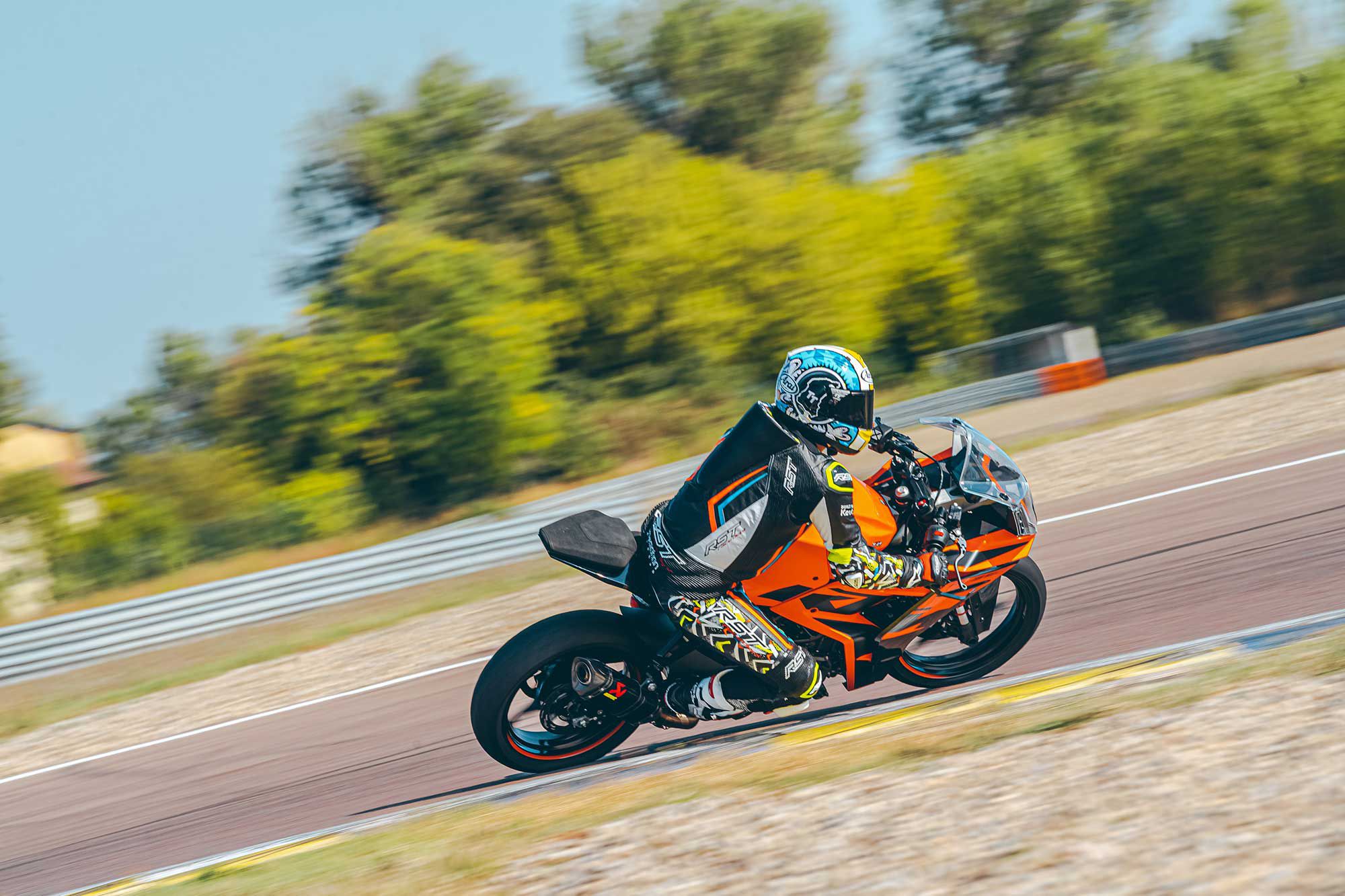
Source: MotorCyclistOnline.com
